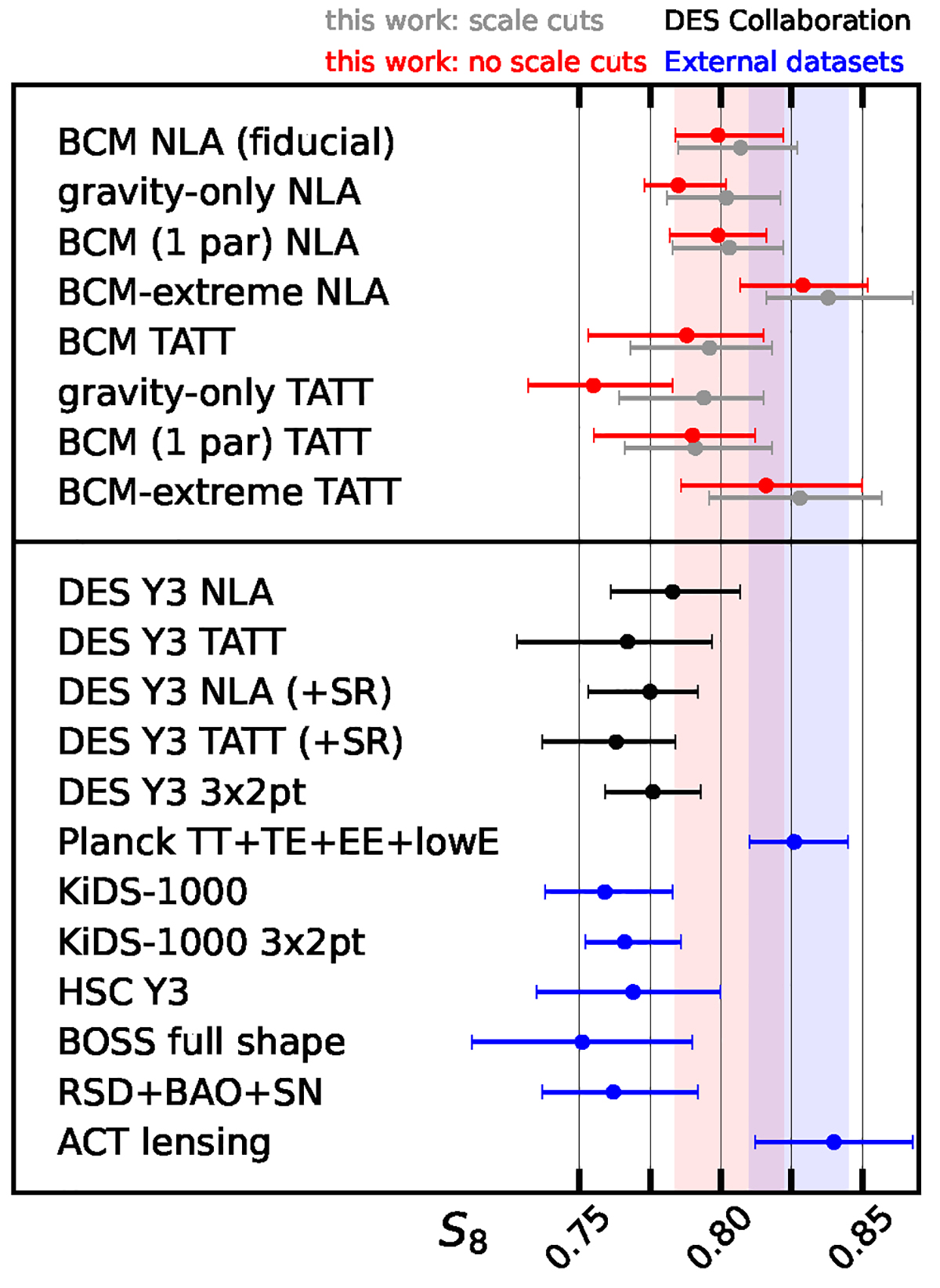Fig. 8.

Download original image
S8 constraints obtained in this work with different analysis strategies for the DES Y3 data, either applying the scale cuts (grey data points) or employing all the angular scales (red data points). We highlight our fiducial model by displaying a red band that corresponds to its 1σ credible interval. We employed our baryonification (BCM) with one or seven free parameters or fixed all the parameters to extreme baryonic feedback. This last model, dubbed BCM-extreme, differs from X-ray observations, and should be considered as an upper limit for baryonic effects. We also varied the intrinsic alignment model choosing either NLA or TATT. For comparison, in the lower part of the panel we display the constraints obtained from the DES Collaboration chains with scale cuts, adding or removing the shear ratios (black data points; Secco et al. 2022; Amon et al. 2022; Abbott et al. 2022). Moreover, we include the external datasets specified in the legend (blue data points; Planck Collaboration VI 2020; Asgari et al. 2021; Li et al. 2023; Philcox & Ivanov 2022; Nunes & Vagnozzi 2021; Madhavacheril et al. 2023), which we describe in more detail in the main text. We highlight the 1σ region preferred by Planck with a blue band.
Current usage metrics show cumulative count of Article Views (full-text article views including HTML views, PDF and ePub downloads, according to the available data) and Abstracts Views on Vision4Press platform.
Data correspond to usage on the plateform after 2015. The current usage metrics is available 48-96 hours after online publication and is updated daily on week days.
Initial download of the metrics may take a while.


